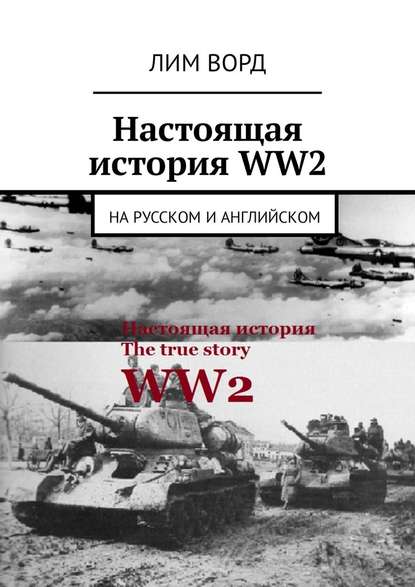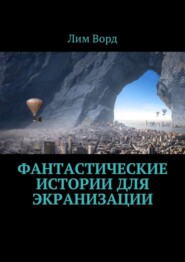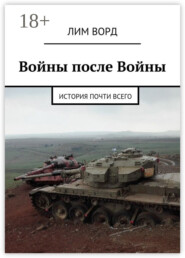По всем вопросам обращайтесь на: info@litportal.ru
(©) 2003-2024.
✖
Настоящая история WW2. На русском и английском
Настройки чтения
Размер шрифта
Высота строк
Поля
In October 1944, the Horthy government announced a truce with the USSR. A detachment of saboteurs Otto Skorzeni kidnaps Horty’s son. Under such pressure, the head of state transfers powers to Ferenc Salashi, and moves away from business.
The «Crossed Arrows» party rules until March 1945.
The way to power was determined after Hitler was sent to the army propaganda courses: his speeches were noticed by influential people. Fourteen years later, A.G. becomes simultaneously Reichspresident and Reichskanzlerom; These long names are shortened to the word «Fuhrer» – «leader.»
The first speeches of Hitler in this post are reduced to defining the world as an unconditional value, however, one way or another, its achievement follows from the return of lands lost by Germany after the Great War.
Landmark of the German Fuhrer – the movement of «blackshirts» in Italy. Since 1919, this southern country is experiencing a «red two-year». The workers organize election committees on the direct model of the Soviets in Red Russia, seize enterprises, and try to control them more or less efficiently. The example of the USSR that is formed in general, does not bring inspiration to the Italian proletariat: this is a civil war, the physical annihilation of classes, mutual embitterment, power structures that seem to be completely out of control, apparently to no one at all. The red two-year period is replaced by the second anniversary of black. In October 1921 the squadrist, a voluntary national security militia, in the number of about 5,000 people, organize a march to Rome. King of Italy Victor Emmanuel meets with the head of the fascists Benito Mussolini, confirms him as prime minister.
The main idea of the Mussolini duce is a corporate state, the unification of classes on the basis of a common nationality and awareness of the exclusivity of their state. Introduced in particular, the laws on the inadmissibility of mixed marriages of Italians with non-Europoid races. The dialectic of fascism rejects peace, tranquility as some absolute value, recognizes war, and other perturbations are an indispensable means of improving mankind.
In general, Italian fascism is much milder than Hitler’s National Socialism. Whatever it was, the corporate state gives its citizens stability, work, a piece of bread and some enthusiasm. It successfully fights with, it would seem, a national brand, and the disaster of Italy – the mafia. However, the payment for such a way of uniting the masses, albeit with some delay – participation in many bloody battles of the Axis bloc in the South and East.
The ideology of fascism, to a greater or lesser degree, takes possession of many European states: Spain, France, Hungary, Austria, Romania, Croatia, Portugal, etc. In Japan, since 1938, in fact, the plan of «Great East Asia "– free from European influence, but under the direct control of the Land of the Rising Sun zone; which includes, among many other things, the whole of China. Militarism is not quite fascism, since it is not tied to a single charismatic dictator. This structure implies controlled tension in society, the creation of an image of an insidious external enemy, overstated by the military economy (albeit at the expense of the most important social programs), extensive external expansion.
The main idea of Hitler is the «People’s State», uniting all the Germans, regardless of the degree of their prosperity and titles, and also the notorious «Tough Vertical of Power». The national state does not at all provide for a true democracy, however, the «loophole» of opinions, a certain initiative of citizens are not punished so harshly and thoughtlessly as in the Stalinist USSR. The value of the blood of «full» Germans was initially large enough. Those Germans who somehow disagree with the policy of the NSDAP are subjected to reprisals only after several, quite intelligible cautions.
«Decisions by the majority are not provided, decisions are made only by responsible persons. Of course, every leader will have a staff of advisers at his disposal, but he will be the only one to decide… only he has the authority and the right to give orders. … It is impossible to do without the parliament, but its role is to give advice. The chambers are working bodies, not voting tools.»
Adolf Gitler.
The ideas of universal unification are inherent in Germany, first of all, since 1648, when the Westphalian world was concluded, which put an end to the terrifying Thirty Years’ War. The German world is divided into three hundred autonomous states, within each of which an unlimited dictatorship is now prescribed. Serfdom is being restored. Henceforth, the prince occupies the highest position in the local church hierarchy. Any electivity (spiritual Synod, collegium of hierarchs, flock) is absent in principle. The ruler creates only that which comes to his mind.
In other countries of Europe, the spiritual and earthly branches of the authorities are at least somewhat divided. Or else (England of the time of Henry the Eighth, the Suprematist Act of 1534, the King – the Head of the Church), the monarchy itself moves, even if in a very complicated way, towards constitutionality, and the principles of collegial decision-making. The exception, alas, is Russia, whose religious figures, since the time of the violent Baptism of 988, are getting used to compassion to the earthly authorities in every possible way.
…The church structures of Germany in the second half of the 1930s become a continuation of the state. Various terms of imprisonment are received by about 700 protestants pastors who do not agree with this state of affairs. The head of the alternative, Christian Confessionary Church, Dr. Nemmler, is taken into custody by the Gestapo in 1937, and is released by the Allied forces only in 1945.
Scientific and art are also subjected to universal unification. From now on, so little predictable currents of thought… insights, discoveries, are called to lead, as they say, «specially trained people.»
You can argue a lot about the hidden springs of a gradually unfolding unthinkable action. One of them, usually not mentioned by historians, as something insignificant, is the massive use of German troops, the population and leadership of the Reich, psychotropic substances. Tobacco smoking is not welcome, although in a combat situation this is perhaps the best way to relieve stress. In the course of «Pills of cheerfulness», pervitin (methamphetamine), the official component of the combat diet of German soldiers. The narcotic, which generates a sense of omnipotence, impunity, a psychoactive drug, is a part of food products, for example «tank chocolate» and sweets. Massively applied since 1938. The Wehrmacht receives about 12 million tablets a month from Temmler and Knoll, with a recommended dose of 2 tablets per day. According to some reports, by the time of the invasion of France, production has reached 833,000 pills per day. Hitler does not smoke tobacco, but takes pervitin from his personal physician Theodore Morrell since 1936 (actually, the beginning of expansion); since 1943 – several doses per day.
This drug, in addition, mobilizes forces, as if the body received a signal of danger – although, in fact, there can be no threat. But, subsequently, after such energy stimulation leading to numerous injuries, nerve cells die hundreds of thousands per day. It is interesting that the drug is recommended for mass consumption, like a panacea, even, for example, to treat female frigidity, and to facilitate delivery. It can not be said that the German authorities specifically promote the spread of pervitin; but they do not interfere with its spread at all.
…In 1930, Germany produces 200 tons of heroin, deploys also the production of other, cheaper, synthetic drugs. Overseas territories have been lost, according to the Versailles Treaty, however, many Latin American countries are willing to supply raw materials. Initially, aspiring to sole authority over the consciousness of its citizens, the National Socialist Party of Germany (NSDAP) strongly opposes the use of opiates. The concept is introduced: «Your own body belongs, first of all, to the family and the nation», in contrast, it seems, really decadent thesis of the Weimar Republic: «Your body belongs only to you.» However, synthetic drugs, now called «energy stimulants,» thanks, in addition to everything, to Hitler, just drop out of the list of banned drugs.
In 1929, Nuremberg created the National Socialist Union of German Doctors, which, by the end of 1933, had 11,000 participants (23% of all German medical personnel). They, based on the data of their patients, create «files of heredity archives». The main idea – the mentally retarded people do not have a right to exist – which, for the sake of humanity and prosperity of the nation, should be broken off in one way or another. Already since 1933, representatives of this union occupy leading positions, informally dispose of a gradual reduction in the standards for supplying food to patients of care and medical institutions – up to a lethal outcome.
Since October 9, 1935, almost legal, the T-4 program starts (from the name of the street Tigartentstrasse, house 4, where the headquarters of this organization was located), designed to reduce the population of Germany by the formula 1000: 10: 5: 1. Out of a thousand people, ten are disabled – five of them should be assisted, one physically eliminated. Planck rises: it now follows «To destroy all those who are unable to work productively, and not only deprived of reason.» In total, before September 1, 1941, 70,273 of its citizens were killed in German hospitals: at least 885 million marks were saved for the Army and Government. At the same time, German doctors working in the program receive monetary allowance more than anywhere else in the Reich. For each «processed dossier», that is, the death of the patient, a fee of 100 Reichsmarks is paid – plus the use of the food stamps of the deceased remaining in the course of the month before the end of the month, the issuing of bills for his relatives to his relatives, within the specified time, and, gold crowns.
Also terminally sick children are destroyed, later – adolescents under 17 years old, diagnosed with Down’s syndrome, microcephaly, hydrocephalus, all kinds of malformations, paralysis and so on. The value of each child’s life is determined in accordance with economic criteria. Parents are informed of the death of children as a result of pneumonia, or other fictitious causes. The body is cremated anyway.
In addition, about 400,000 people with an arbitrarily diagnosed diagnosis (most often «schizophrenia»), sometimes simply – the political enemies of the Reich, from 1943 to 1945, are subjected to forced sterilization.
Thus, the hospitals of the Third Reich are exempt from former hospital patients. However, some hidden laws of retaliation come into effect, medical institutions are quickly replenished by the wounded, at the front, and as a result of increasing air strikes.
Such a policy of the NSDAP ceases to please even some of its influential functionaries. In the end, a very weighty message of ferment in the minds reaches Hitler’s ears by Hannah Reich, the personal pilot of the Fuhrer. By August 1941, the T-4 program in Germany is partially curtailed, its main structures, trained medical personnel, mobile gas chambers are moving to the East. Here, killing people is done by the introduction of barbiturates, more often by an elementary «lowering» of the diet to zero. In total, on the territory of the Soviet Union (including the Baltic States), as well as in Poland, German doctors kill a million «Ostarbeiters», and an unknown number of German soldiers with severe injuries…
…In 1934, 97% of Germany’s debts to Great Britain and the United States (total 23.3 billion marks) are written off. This act is prompted by a similar decision and other countries in Europe. Switzerland agrees to sell Reich gold for the Reichsmark; later she does not disdain to accept hundreds of kilograms of gold crowns from the concentration camps.
The Civil War in Spain
After the fall of 1931, the monarchy, the new Republican government of Spain abolished aristocratic titles, greatly reduced the armed forces, and selected surplus land from the landlords (over 200 hectares). Already not popular with the majority of the population, an overly politicized and biased church, is separated from the state.
All these reforms are carried out inadequately and cause strong opposition from a significant part of society. The rebellion begins on July 17, 1936 in Spanish Morocco. July 18, he throws himself in, in fact, Spain. On the side of the putschists – 80% of the highest officers, mostly ground forces. Since July 27, the rebels are beginning to receive military and technical assistance from Germany and Spain – the bombers SM-81, Yu-52, the CV3 / 33 tanket, as well as numerous volunteers. Only on October 16 the Republicans announce the establishment of their own, regular People’s Army, which includes Soviet military specialists and international brigades of anti-fascists. In mid-October, the first shipment of I-15 fighters, ANT-40 bombers and (300) T-26 tanks (with Soviet crews) arrives in Spain. Part of the military cargo goes by sea, at risk of being captured or destroyed (at the bottom there are three ships), part – by railroad through France. On the streets bombed by the Legion of the Air Force «Condor» in Madrid, two weeks are fierce battles, after the rebel-francists retreat. However, the government of Franco is recognized by Germany, Italy, Portugal, a number of Latin American states. In February 1937, there was a second battle for Madrid. The Francoists (Spaniards and Italians) are on the approaches to the capital, they are stopped by scattered parts of the Republicans and the Soviet armored brigade T-26 of General Dmitry (Pablo) Pavlov.
1. I-15
2. I-16
3. Bf. (Me) – 109, Series B (Bruno)
4. Heinkel 51
1. I-15 (Chato – «Pug-nosed»), a half-plane (the lower wing has a much smaller area) Polikarpova, four 7, 62 mm. machine gun, the speed of 370 km. h, the flight range is 750 km. On its basis, I-153 was created, a deep modernization of the I-15, «Seagull. Introduced retractable landing gear, appeared armored bump, the steel forms are more streamlined. Armament: four 7.62 mm. machine gun, 8 unguided missiles with 82 mm. shells, up to 200 kg. bombs. The speed is 410—430 km. h. The range of flight is 740 km. Put into operation by 1939 (after the war in Spain), quite successfully participated in the conflict at Halkin Gol. In the Finnish war proved to be mediocre. In the hot summer of 1941 it became finally clear that the development of the idea of biplanes, in addition to the short fuselage, of the wobbling «fatties» – Polikarpov’s big mistake. From 1939 to 1941, 3,427 aircraft were produced.
2. I-16 (nickname in the USSR – Ishak, Yastrebok, Spanish army, Franco – Rata – agile rapacious «Rat», Republicans «Mosca» – «Fly», in China – «Yanzi» – «The Swallow»). The first fighter is a low-grade aircraft in the USSR. Armament – four 7.62 mm. the ShKAS machine gun (the Shpitalniy and Komaritsky system, for the first time in the world, the rate of fire is 1,800 rounds per minute) or two 20 mm. guns and two 7.62 mm. machine gun. The speed at altitude is 450 km. h. The range of flight is 520 km. This is the maximum performance of an airplane with a single-row, star-shaped engine. The lantern of the cockpit can be closed completely, however, due to frequent seizures, the pilots keep it open (as can be seen in almost all the photographs). By 1942 inclusive (83 aircraft in the last year) produced 10 300 copies (not counting a few dozen, manufactured in Spain and China). Together with the «Seagull» brutal I-16 was the backbone of Soviet fighter aviation to the beginning of the Great Patriotic War. Led by an experienced pilot, he was not an easy prey, he tried to avoid maneuvering with him the aces of the Luftwaffe, saying that, they say; «You should not drive a rat into a corner.» However, the time I-16 passed.
3. Bf. (Me) – 109, Series B (Bruno), a fighter, was supplied to the Francoists in the second half of the Civil War. At that time had three 7.92 mm. machine gun. By the beginning of the Second World War Me-109 got four machine guns, or, in the other series, two machine guns plus 30 mm. a cannon with 60 shells. As an attack aircraft, he carried one 250 kg. the bomb. Speed – before modernization, during the war in Spain only 470 km. h, but by 1939, after replacing the engine (which became an unpleasant surprise, primarily for the British Air Force) – 570 km. h. In the mid-forties, its speed reached 620 km. h. The range of the flight is 480 km. In total, from 1937 to 1945, 34,000 Messerschmitts were produced.
4. Heinkel 51, the fighter of the Frankish first half of the war. Virtually had no chance against I-15. Armament – two machine guns 7,92 mm., Speed 310 km. h, flight range 550 km.
The rebels are changing the direction of the main attack and are crashing to the north of Spain – the Basque Country. April 26 German pilots destroy the city of Guernica. Strengthens his dictatorship Franco – his party «Spanish Phalanx» gets rid of internal opposition. At this time, the official Spanish government, which wants to achieve stability, completely purposely replaces a number of ministers. A single strong leader does not appear. The Republican army exhausts forces in fruitless frontal attacks of insignificant objects.
Organized according to the Stalinist patterns of the security service of the Republic, is being dealt with by prominent figures of the Marxist Party of Spain (Spanish POUM), is developing mass blind terror. Many Spanish Communists, as well as arrivals from all over the world interbrigadovtsy begin to get disappointed in their work, their morale is rapidly falling. The last successes Republicans achieve at the beginning of the offensive at the city of Brunet; (just west of the center of Spain), then they become entangled in contradictory orders, lose 25 thousand people against 10 thousand from the enemy, and together with them the original unity. On August 18, the republican units leave the front. 60,000 people are captured.
Italian submarines arrange a hunt for ships that supply goods still fighting in other theaters of military operations, Republicans. In early September, there is a sea battle; The Frankish flagship gets seriously damaged and departs from the convoy. Encouraged by this, insignificant in essence, success, the Republicans decide to hold a decisive offensive on land (Zaragoza, northeast of Spain). And again, their 80,000-strong group drains itself in unsuccessful attacks of secondary settlements, and then produces personnel personnel permutations that are also unnecessary to anyone. In early October, a new attempt is made to take Zaragoza. The main hope now is for 50 Soviet high-speed BT-5 tanks. Nationalists open floodgates of irrigation canals. Tanks bypass the appeared lakes, get bogged down in the mud, or far away from the accompanying infantry. The battle ends on October 17. Republicans lose 30,000 people killed and wounded, more than 30 tanks, francists – 20,000 people.
1. BT-5
2. Waddress CV3 / 33 (Carro veloce CV-33 «Ansaldo»)
3. T-26
4. ANT-25
1. Wheel-caterpillar BT-5. Armament: 45 mm. gun, 115 shells, paired with a cannon 7.62 machine gun. Booking: the forehead, the side of the body 13 mm., The forehead, the side of the tower 13 mm. The speed along the highway is 52 km. h on caterpillars, 72 km. h on wheels. Crew of 3 people. Weight 11 tons. Power reserve on the highway on tracks 150 km, wheels – 200 km.; while the rubber rim wears out after 150 km. mileage. The specific power is 35 hp. (higher than that of modern tanks). Ground pressure 0, 65 kg. see with clad caterpillars, 5.65 kg. see on wheels. The number of vehicles produced from 1933 to 1934 – 1880. Most of the tanks lost in the first months of the war. Since 1942, the machines have basically been transferred to the rear, as training, a certain number of BT-5 has survived until 1945, participating, among other things, in defeating the Kwantung Army.
2. Waddress CV3 / 33 (Carro veloce CV-33), otherwise, by the name of the company – «Ansaldo». Armament: two 6.5 mm. machine gun. Booking: the forehead of the case is 15 mm., The board is 9 mm, the forehead of the felling is 15 mm, the board is felling 9 mm. Crew 2 people. Weight 3,5 tons. The speed along the highway is 42 km. h. The power reserve is 150 km. Specific power 12 hp There are 1400 copies produced.
3. T-26. Photo of the consequences of the late (1941) tank battle for Dubno-Lutsk-Brody. The first serial classic Soviet tank, which took part in many battles, was put into operation after many problems with non-working engines and assembly of hulls (including unarmored steel). Difficulties were removed after manufacturers were allowed to introduce changes into the original scheme related to the peculiarity of domestic technology, changes. Armament: the first series – 37-mm gun, 7, 62 mm. a machine gun in two towers, then, in a single-tower version of 45 mm. gun, two 7, 62 machine guns. Booking bulletproof: the forehead, the side of the body 15 mm., The forehead, the side of the tower 15 mm. The crew is three people. Weight 8 tons. Speed along the highway is 30 km. h, the power reserve is 120 km. I received the approving comments of the veterans of the Great Patriotic War – «for our time a good tank, without it we would have to be very difficult.» Prototype – English (two towers) six-ton «Vickers». Despite some difference in the reservation, he could hit his opponent, the German T-3 is almost as confident as he is his. But, the practical training of a Soviet tankman on a tank-boat is 6.5 hours (sometimes 300 meters, straight, and back to the hangar), German – 50—120 hours (practically, the armored car resource is burnt).
From 1931 to 1941, 11218 T-26 (half of the Soviet tank fleet at the beginning of the war) were assembled.
4. ANT-25. The aircraft, created in the USSR specifically for the establishment of world records (1933). The maximum flight duration is 75 hours, the range is 12 411 km., The speed is 240 km. h. Crew of three people. The military version is DB-1 (ANT-36), the cruising speed is 200 km. h, bomb load 1000 kg., combat radius of 2000 km. In this form, 24 cars were built, the air was rarely raised, and finally they were used as targets at the airfield.
June 18, 1937 ANT-25 with a crew from V. Chkalov, G. Baidukov, A. Belyakov takes off from the airfield Shchelkov (30 km from the capital) and makes a flight on the route Moscow-North Pole-United States of America. The landing takes place at Pearson Airfield, Vancouver, Washington (north-west of the USA), with a huge crowd of people. Later, the aircraft in disassembled form, on the ship gets back to the USSR, by our time finds shelter in the museum of Nizhny Novgorod. His double, who also flew to America, already under the control of the crew of M. Gromov, now resides in the museum of Chkalovsk (Schelkovo).
Due to his charisma V. Chkalov establishes a warm, trusting relationship with the Americans.











